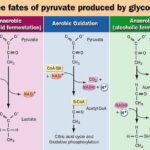IGCSE Biology 38 Views 1 Answers
Sourav PanLv 9November 15, 2024
Identify on diagrams and state the functions of the following parts of the male reproductive system: testes, scrotum, sperm ducts, prostate gland, urethra and penis
Identify on diagrams and state the functions of the following parts of the male reproductive system: testes, scrotum, sperm ducts, prostate gland, urethra and penis
Please login to save the post
Please login to submit an answer.
Sourav PanLv 9May 15, 2025
The male reproductive system consists of several key structures, each with specific functions. Below is a description of the following parts: testes, scrotum, sperm ducts (vas deferens), prostate gland, urethra, and penis. Diagrams can typically be found in anatomy textbooks or online health resources, but here’s a detailed overview of each part and its function.
1. Testes
- Description: The testes are two oval-shaped organs located within the scrotum. They are responsible for producing sperm and hormones, primarily testosterone.
- Function:
- Spermatogenesis: The testes contain seminiferous tubules where sperm cells are produced.
- Hormone Production: They also produce testosterone, which is crucial for the development of male secondary sexual characteristics and reproductive function.
2. Scrotum
- Description: The scrotum is a pouch of skin that holds and protects the testes. It is located behind and below the penis.
- Function:
- Temperature Regulation: The scrotum maintains the testes at a temperature slightly lower than body temperature, which is essential for optimal sperm production and viability.
- Protection: It also provides a protective environment for the testes.
3. Sperm Ducts (Vas Deferens)
- Description: The vas deferens is a muscular tube that transports sperm from the epididymis (where sperm mature) to the ejaculatory duct.
- Function:
- Sperm Transport: It carries sperm during ejaculation and connects to the seminal vesicles and prostate gland to mix sperm with seminal fluid to form semen.
4. Prostate Gland
- Description: The prostate gland is a walnut-sized gland located below the bladder and surrounding the urethra.
- Function:
- Fluid Secretion: It produces a slightly alkaline fluid that nourishes and protects sperm, aiding in their motility and survival within the female reproductive tract.
- Seminal Fluid Formation: This fluid constitutes a significant portion of semen.
5. Urethra
- Description: The urethra is a tube that runs through the penis, connecting the bladder to the outside of the body.
- Function:
- Dual Role: It serves as a passageway for urine from the bladder and for semen during ejaculation. This dual function is essential for reproductive and urinary systems.
6. Penis
- Description: The penis is the external organ used for sexual intercourse and urination. It consists of erectile tissue that can fill with blood, causing an erection.
- Function:
- Semen Delivery: During ejaculation, the penis delivers semen into the female reproductive tract.
- Urination: It also serves as a conduit for urine to exit the body.
Summary Table
| Structure | Description | Function |
|---|---|---|
| Testes | Oval organs in scrotum | Produce sperm and testosterone |
| Scrotum | Pouch of skin holding testes | Protects testes; regulates temperature for optimal sperm production |
| Vas Deferens | Muscular tube transporting sperm | Carries sperm from epididymis to ejaculatory duct |
| Prostate Gland | Walnut-sized gland below bladder | Produces alkaline fluid; nourishes sperm; forms part of semen |
| Urethra | Tube running through penis | Passageway for urine and semen |
| Penis | External organ for sexual intercourse | Delivers semen during ejaculation; allows urination |
0
0 likes
- Share on Facebook
- Share on Twitter
- Share on LinkedIn
0 found this helpful out of 0 votes
Helpful: 0%
Helpful: 0%
Was this page helpful?




